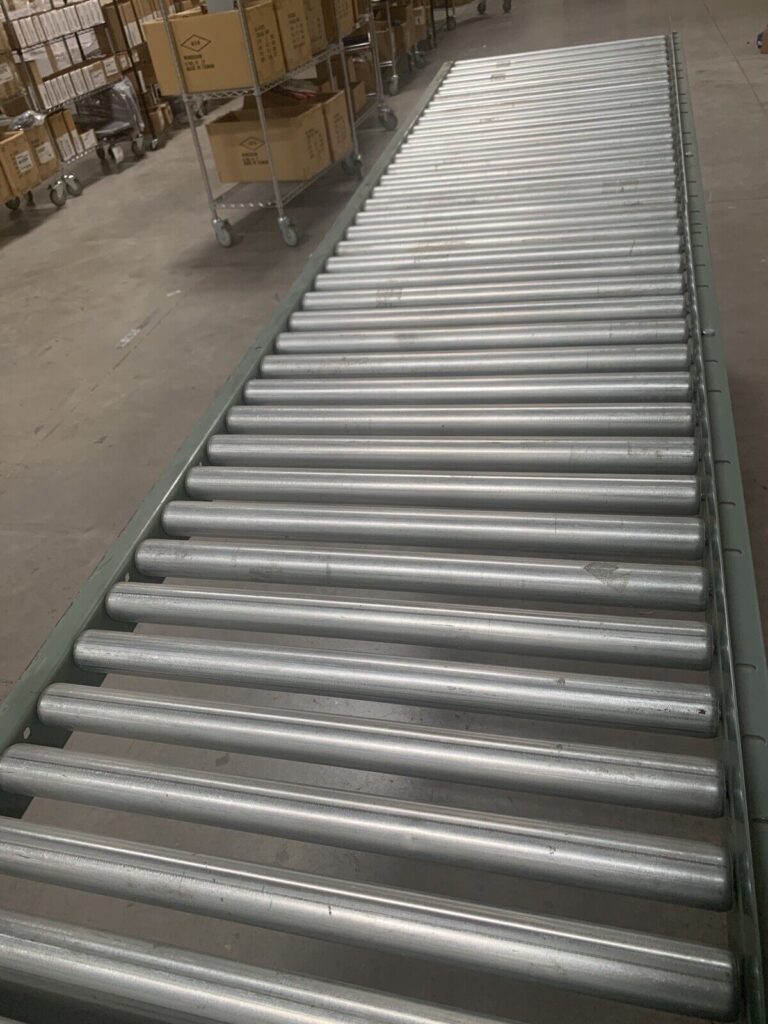Have you ever watched parcels gliding smoothly across a warehouse floor and wondered what’s beneath them, ensuring their steady movement? Enter the gravity roller conveyor, a simple yet revolutionary piece of equipment. It’s like the unsung hero of many industries, working diligently without much fanfare but playing a pivotal role.
What is a Gravity Roller Conveyor?
Components of the Conveyor
A gravity roller conveyor is a series of parallel rollers set within a sturdy frame. Think of it as a set of rolling pins side by side, each ready to assist in the smooth movement of goods. These rollers allow boxes, parcels, and other items to travel across their surface with minimal friction.
How it Operates
True to its name, the system relies on gravity. Place an object on one end, give it a slight nudge, and let gravity do the rest. It’s akin to sliding down a gentle hill; once you start, you continue moving until you reach the bottom, or in this case, the end of the conveyor.

Benefits of Using Gravity Roller Conveyors
Cost-Efficiency
One of the most significant advantages of gravity roller conveyors is their cost-effectiveness. Why? Because they don’t rely on electricity or other external power sources. Imagine sipping a cold drink on a hot day without running up your electricity bill – that’s the efficiency we’re talking about!
Flexibility
They can easily be adjusted, extended, or retracted based on your needs. It’s like having a magic carpet that changes size according to your wishes!
Low Maintenance
Without motors or complex parts, there’s less that can go wrong. Think of it as owning a bicycle instead of a car; fewer parts mean fewer maintenance woes.
Safety Features
Due to their simplicity, they come with fewer risks. With no electrical components, the chances of malfunctions that could harm workers are minimized.
Common Applications
Warehouses
From large distribution centers to small storage facilities, these conveyors streamline the movement of goods, making the job of warehouse staff easier and more efficient.
Production Lines
In manufacturing setups, they ensure that products move seamlessly from one production stage to the next, like a baton passed smoothly in a relay race.
Packaging Areas
After goods are manufactured, they often head to packaging zones. Here, gravity roller conveyors play a part in ensuring products are packed and ready for shipment or retail.
Choosing the Right Gravity Roller Conveyor
When shopping for a gravity roller conveyor, consider factors such as the size and weight of the items you’ll be moving, the length of the conveyor you need, and the environment in which it’ll operate. It’s like picking the right pair of shoes; the fit and purpose must align perfectly.
Conclusion
Gravity roller conveyors are the silent champions of many industries, offering a blend of efficiency, safety, and flexibility. Whether you’re looking to optimize a warehouse, streamline a production line, or enhance a packaging area, they are the reliable, unsung heroes ready to assist.
FAQs
- How do I determine the right size of rollers for my conveyor?
- Consider the size and weight of the items you’ll transport. Bigger, heavier items typically require larger, more robust rollers.
- Do gravity roller conveyors require any electricity?
- No, they operate purely on the principle of gravity and manual assistance.
- Can I adjust the speed of items moving on the conveyor?
- Speed is controlled manually by the force applied to the items. Using brakes or stoppers can help regulate speed.
- How do I maintain and clean my conveyor?
- Regularly check for debris or obstacles that could impede movement and ensure rollers are in good condition.
- Are there weight limits for items on a gravity roller conveyor?
- Yes, each conveyor has a specific weight capacity. Always check the manufacturer’s guidelines.

Hi! I’m Mike from Mike’s Computer Info. Feel free to reach out to me with any article tips, suggestions, or corrections at mike@mikescomputerinfo.com.